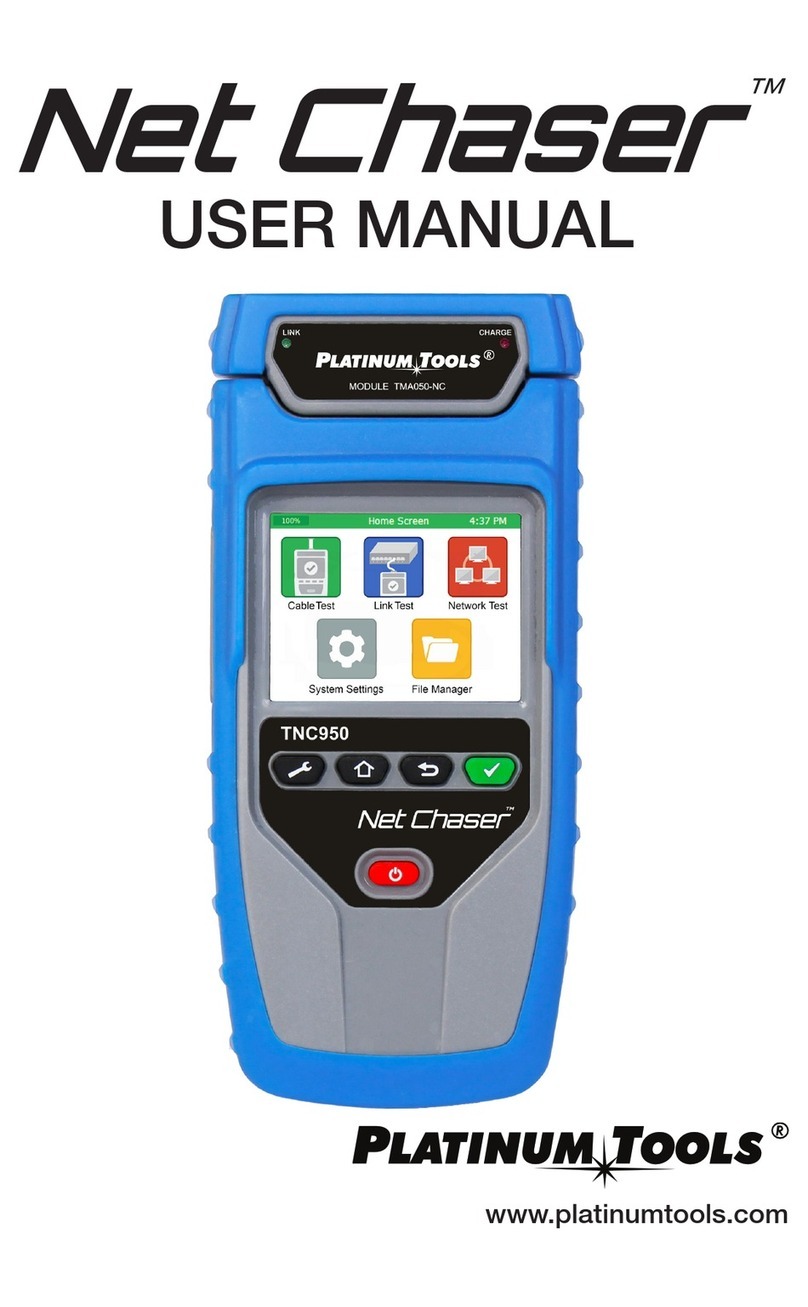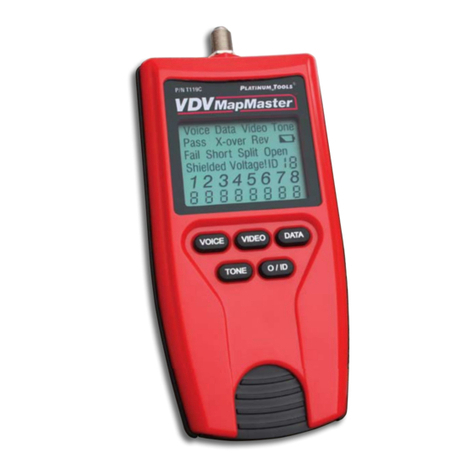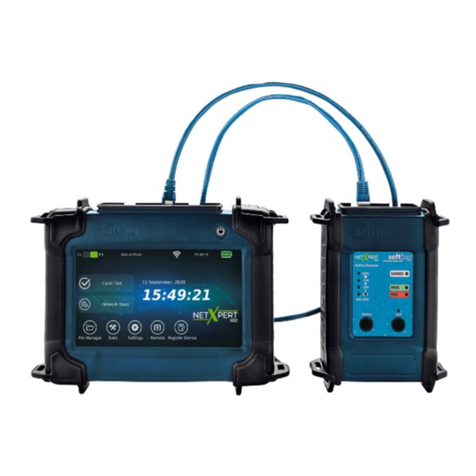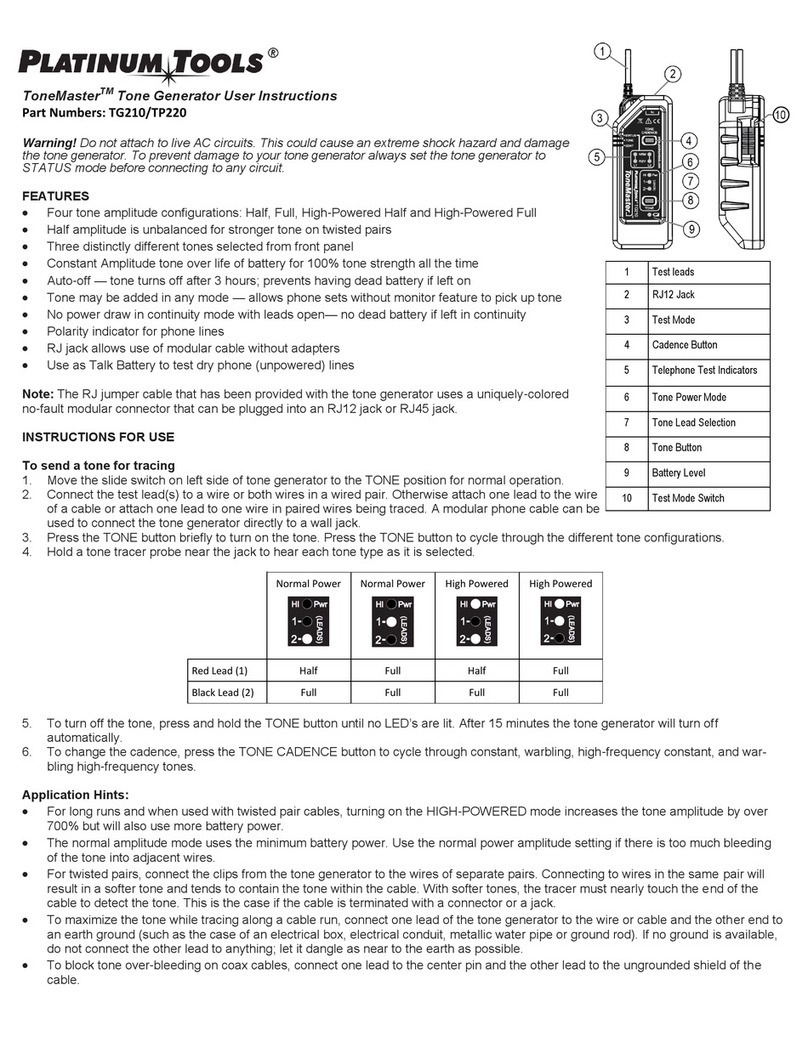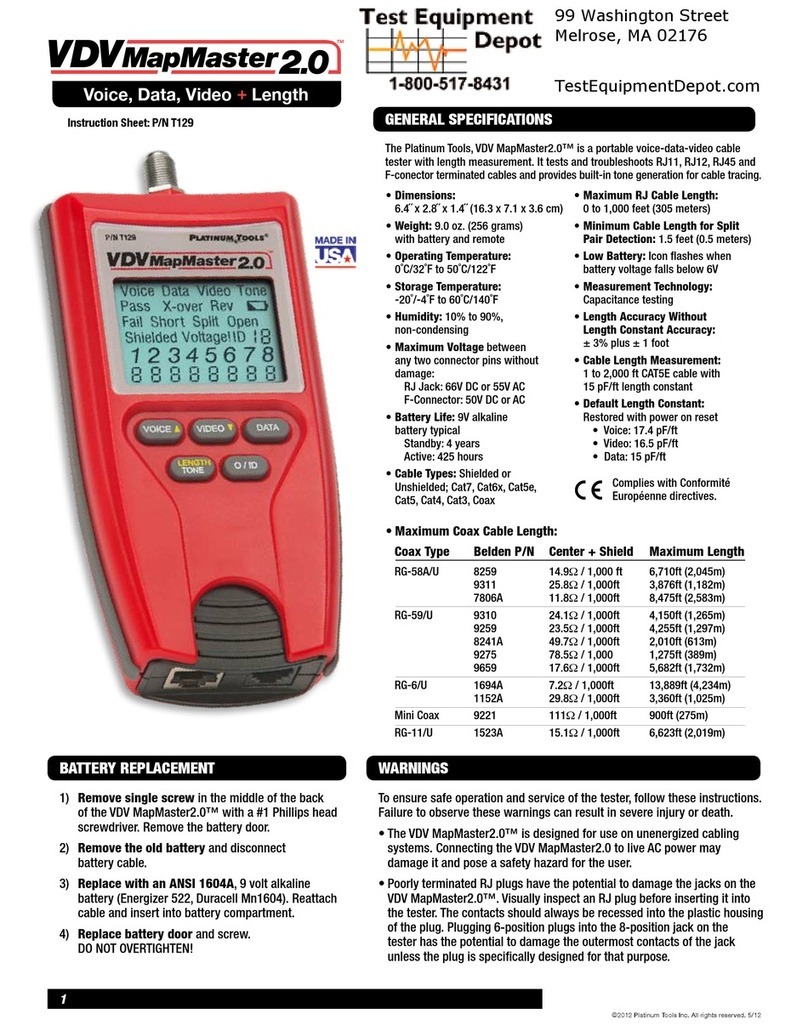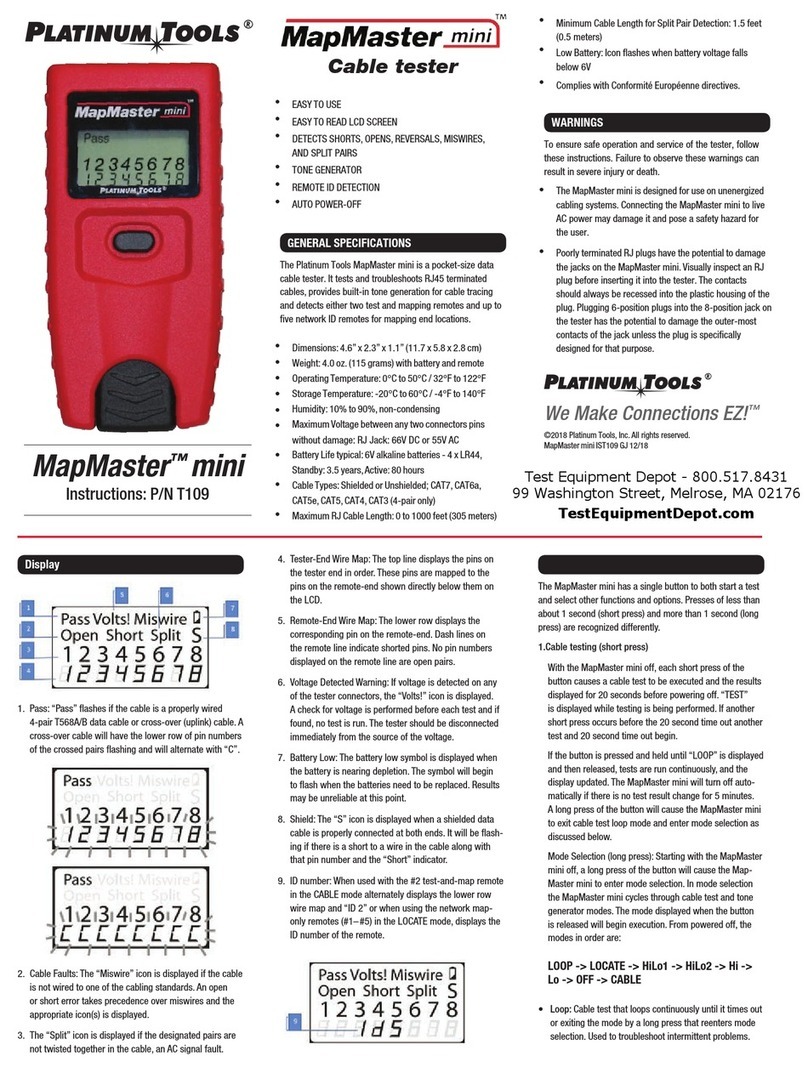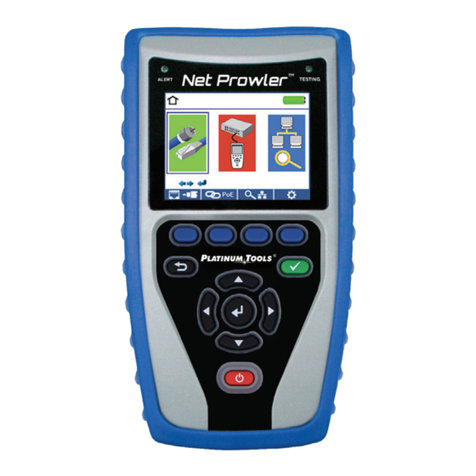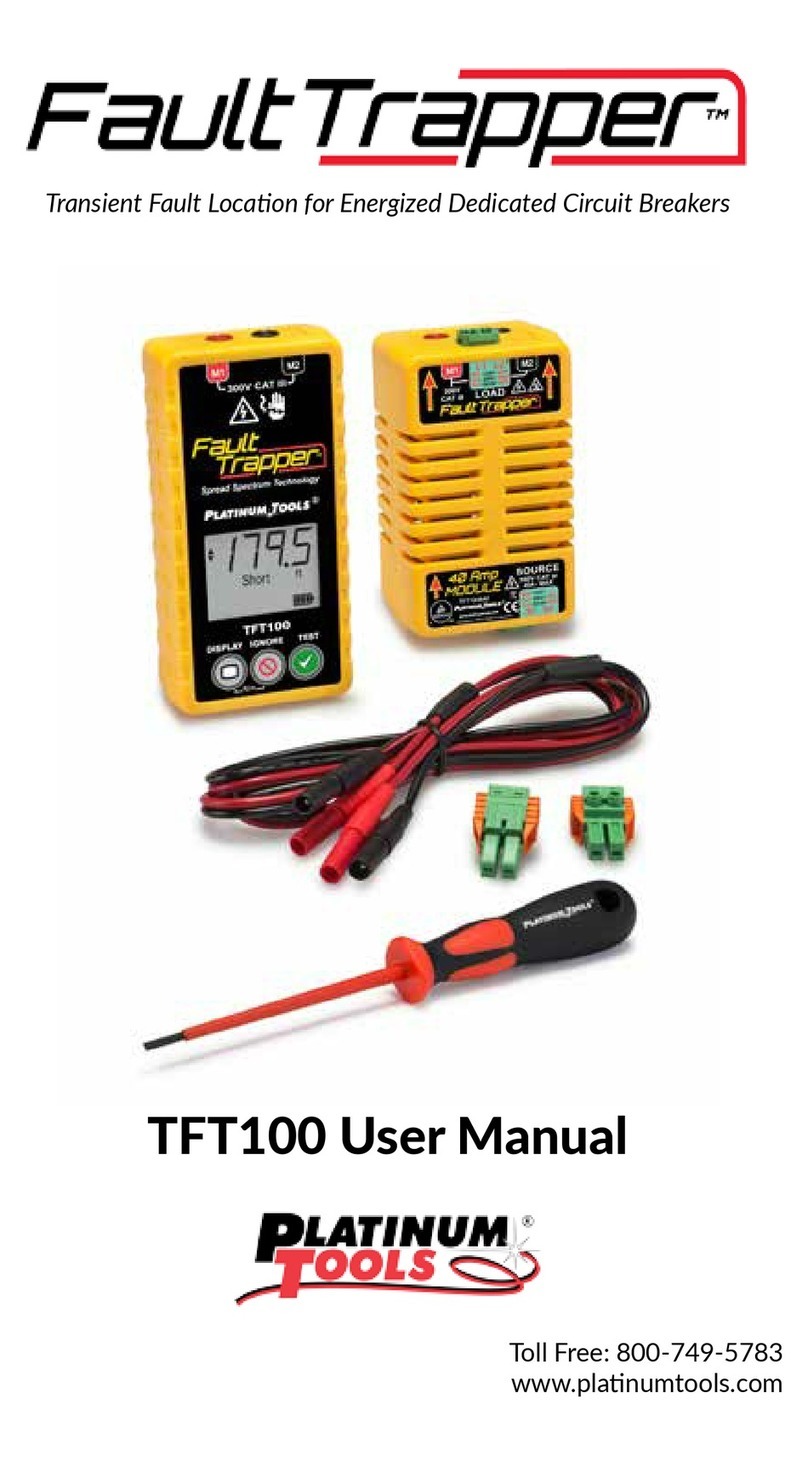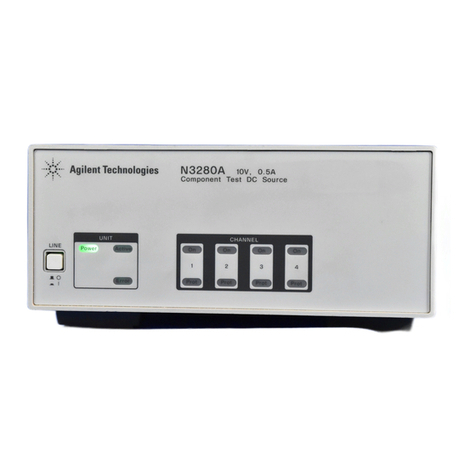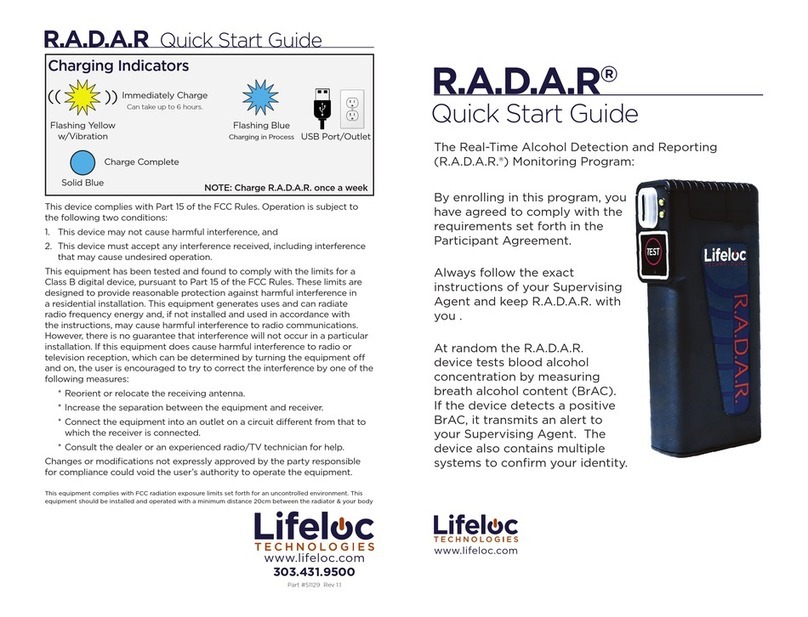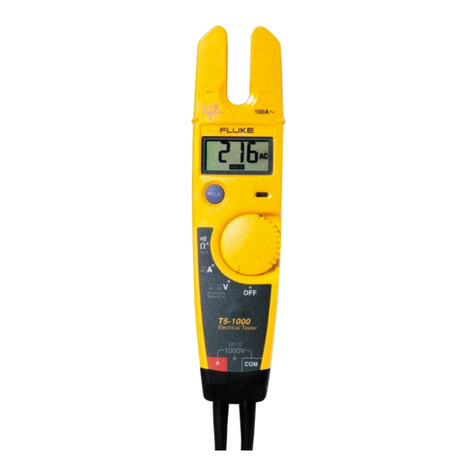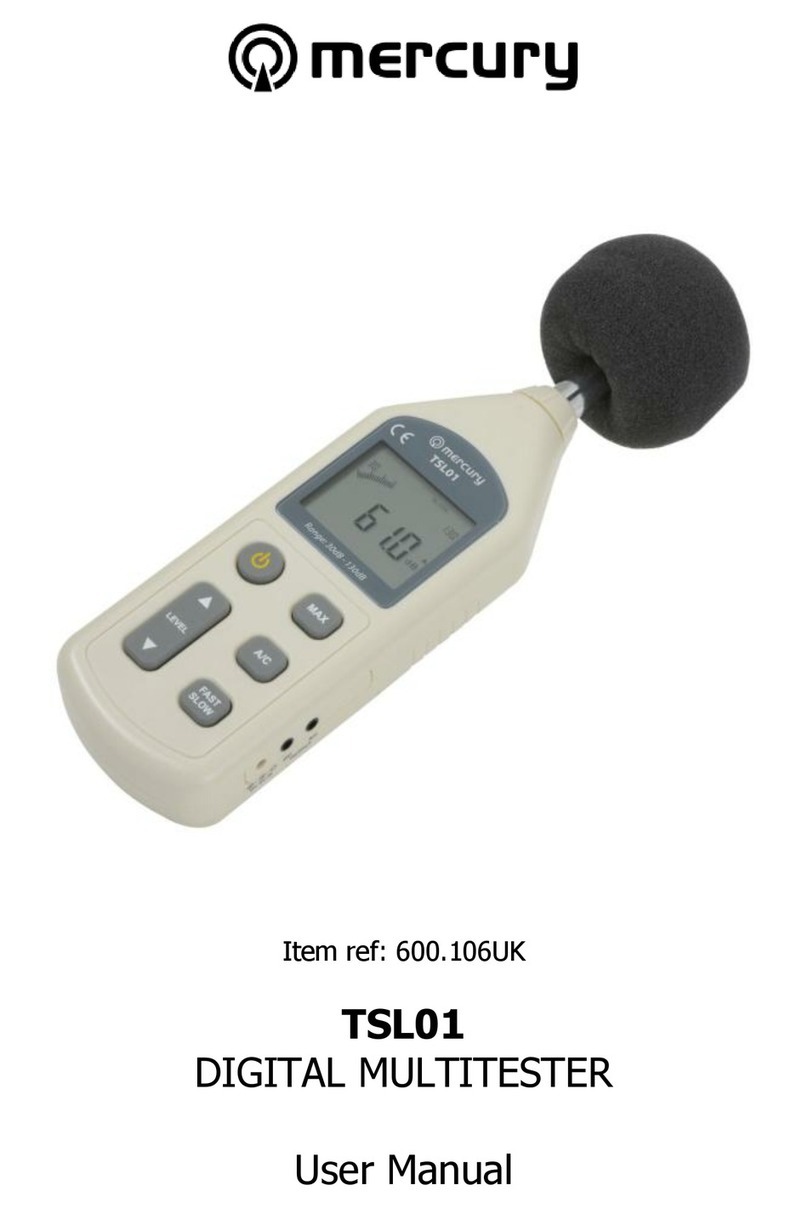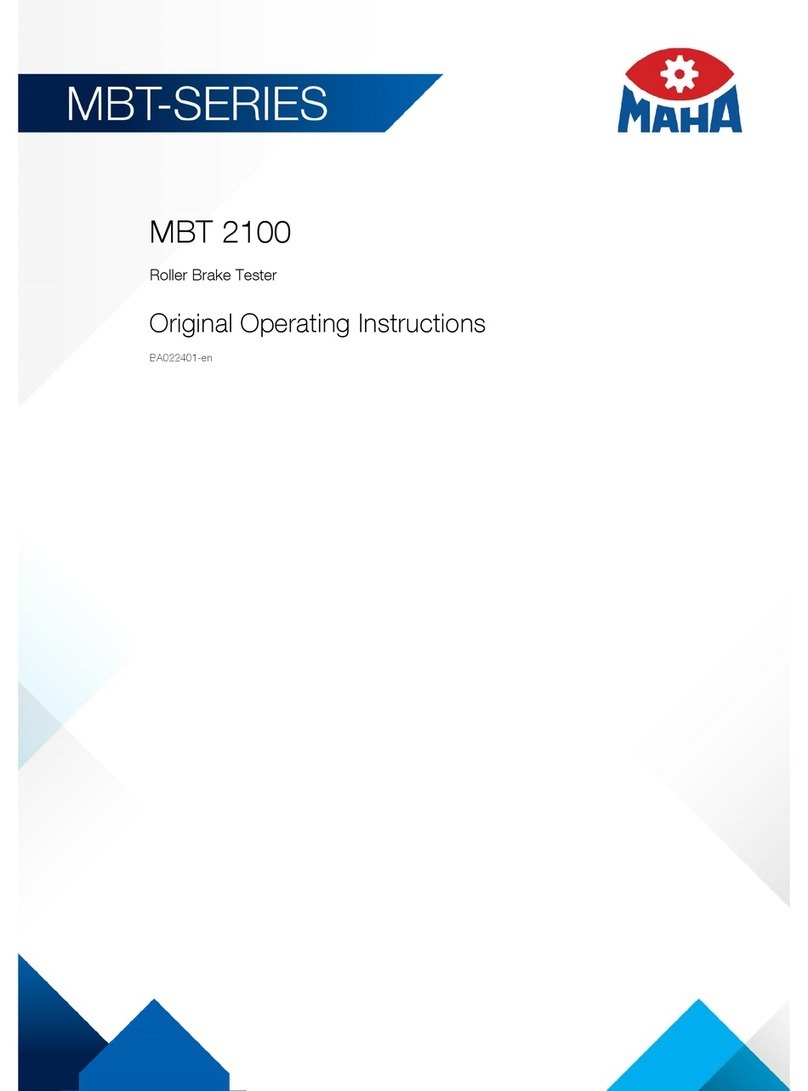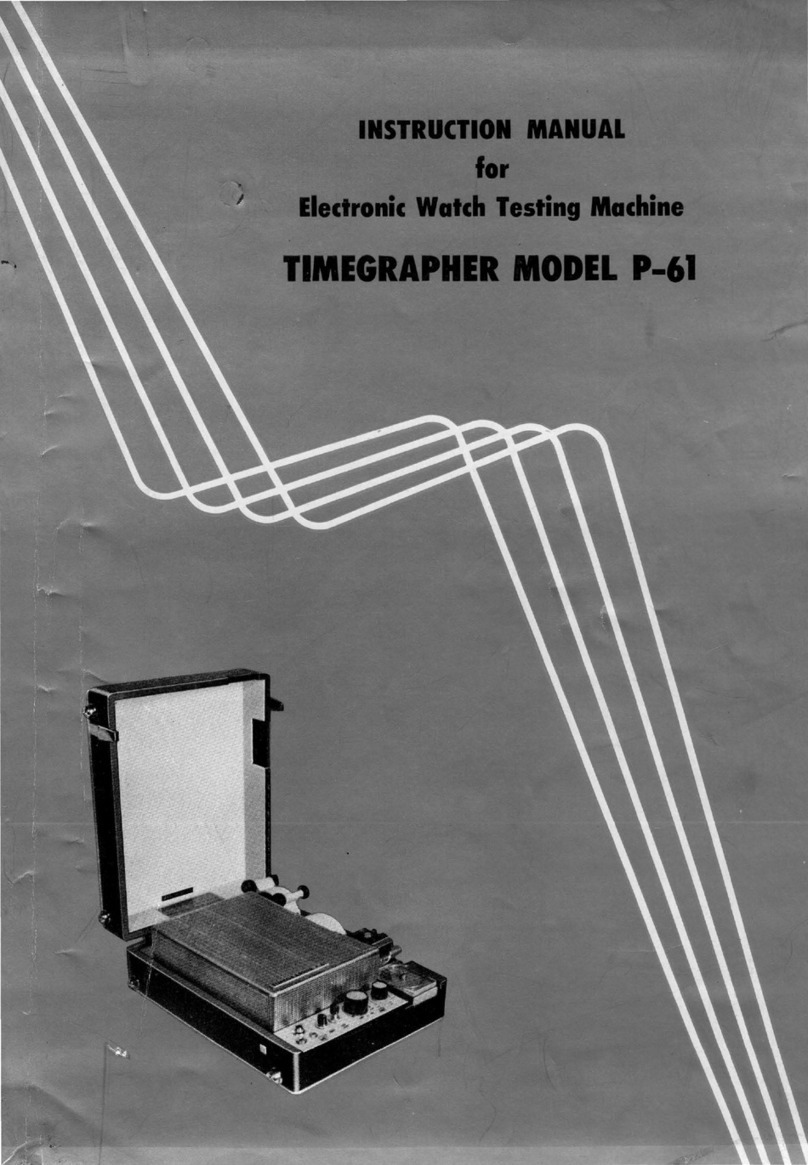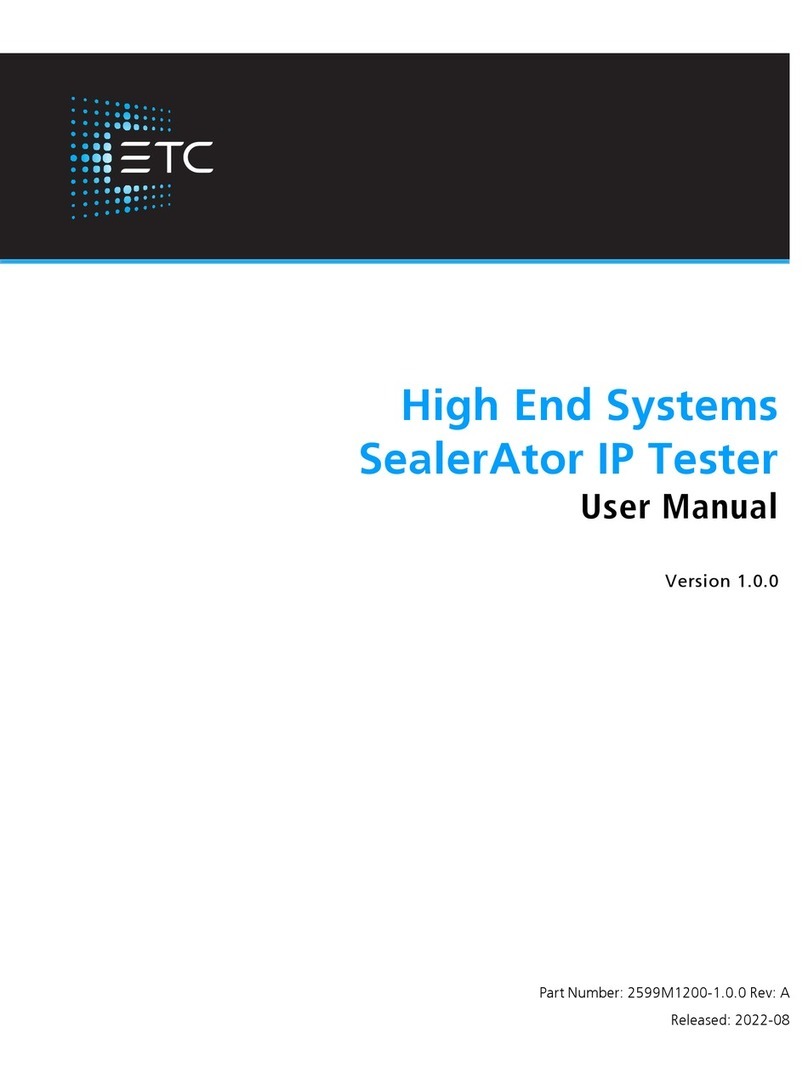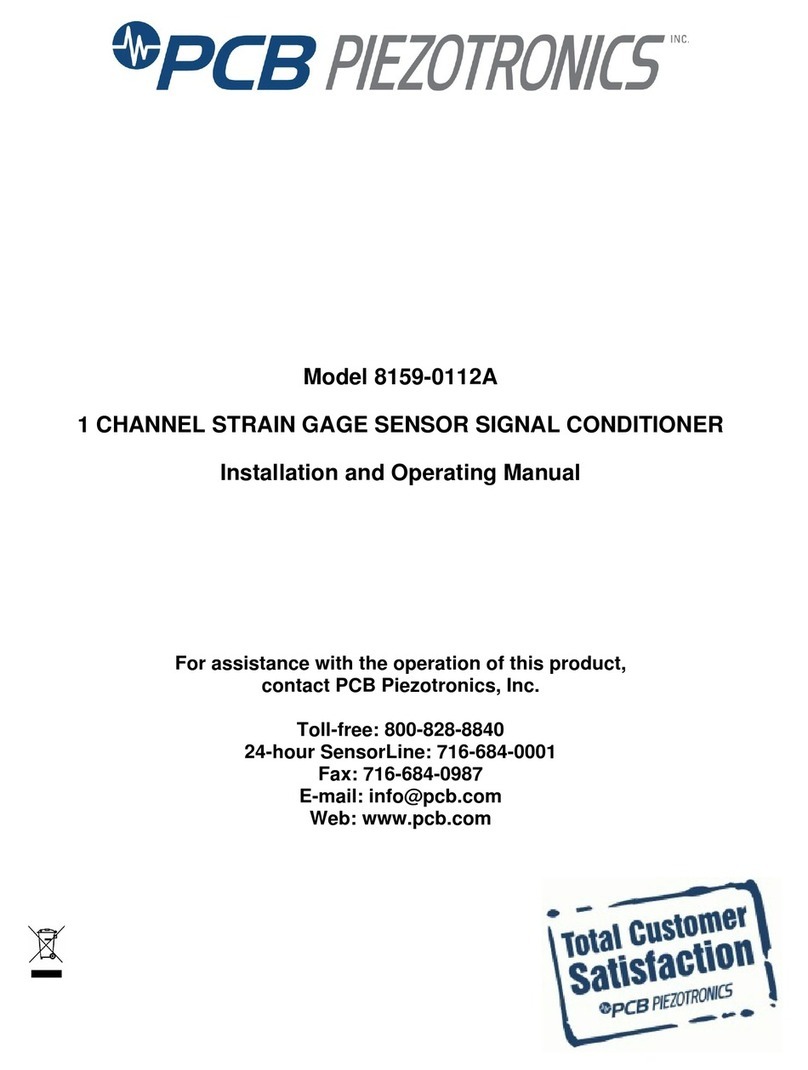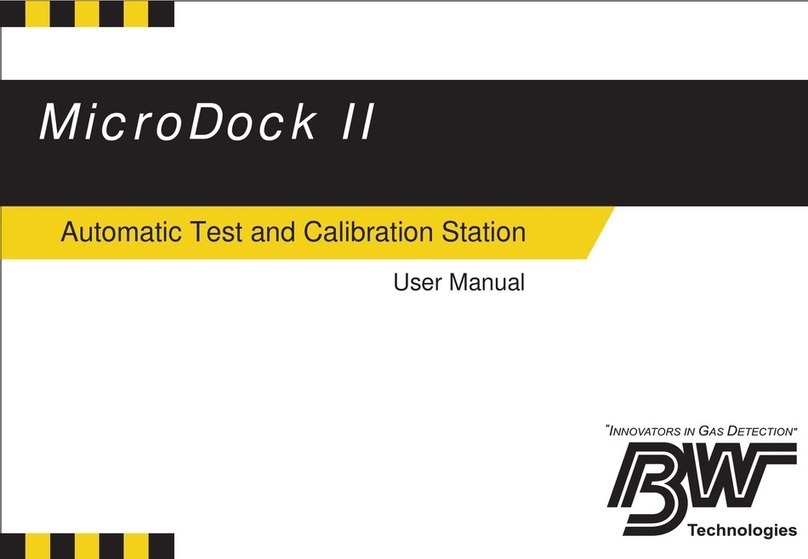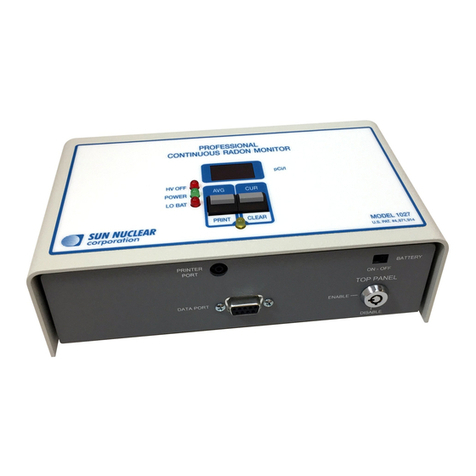
Transient Fault Location for Branch Circuit Breakers
Toll Free: 800-749-5783 Page 7of 8V 1.3 (draft)
connection the Display button can be used to power the unit on using battery power to show the results
from a previous test.
Starting a Test – While powered by the AC power connection press the Test button. The Fault Trapper
will not run a test under battery power. The velocity of propagation used for distance measurement is
70% the speed of light, a nominal value for power wiring, and is not configurable.
Test Running – When a test is started boxes running left to right in the test results area and the up
down arrows on the left side will be flashing until a fault is shown. Once a fault is found the up down
arrows will continue to flash while the test is running while the distance to the last fault found is
shown. The lower left portion of the screen denotes the time. Before a fault is found the time will
show how long it has been since the test started. Once a fault is found the last fault will be shown and
the time will show how long the time was between the beginning of the test and the last fault found.
Stopping a Test – The three ways a test can stop are when the A/C power goes down, the Test button
is pressed and when the Ignore button is pressed. When the A/C power goes down the unit will run on
battery power for long enough to finish scanning for the fault which may have caused the A/C to
power off (breaker trip). If a fault occurred with the last 30 seconds before the A/C went down it will
be classified as the “Breaker Trip Fault”, the "Voltage!" icon will be displayed when this occurs. A non-
breaker trip fault (if found earlier during the test) will also be saved. When the Test button is pressed
during a test any fault found will be saved as a “Non-Breaker Trip Fault” and testing halted. A second
press of the Test button will restart testing and clear any previous faults and Ignores.
Ignore Feature - The Ignore button is used to tell the Fault Trapper that a fault it is detecting is part of
the normal operation of the circuit such as a motor starting up or a switch being toggled. Pressing the
Ignore button will save the location information and fault type and resume monitoring. The ignored
fault will be shown on the screen. To clear any saved ignores hold down the ignore button for 3
seconds. “Clr” will be shown on the screen to indicate the ignore fault was cleared. If the Ignore button
is pressed while testing the test will be stopped. If ignore is pressed and there is no fault saved from a
previous test dashes will be shown in the test result area to denote that no event is currently ignored. If
the ignored fault occurs during the last 30 seconds before the A/C power goes down it will still be shown
as the “Breaker Trip Fault”. The ignored fault is +/- 3% of the distance to the ignored fault location
(regardless of being a Short or an Open event).
Test Results - The Display button is used to show test results. If the AC power connection is off the unit
will use the 9 volt battery to power on the display and show the results from the last test. There can be a
“Breaker Trip” fault and a “Non-Breaker Trip” fault. The voltage icon will flash indicating that the fault
shown caused the breaker to trip. Tap the Display button to cycle between the two faults (if there are
more than one). Ft and M units can be toggled by holding down the Display and Ignore buttons for 3
seconds.
Battery Remaining – In the lower right portion of the screen is a battery icon with bars showing how
much remains for the 9V battery. Three bars shows a full battery, two bars is between 33% and 66%,
one bar is between 33% and 10%. A flashing battery outline icon shows that there is less than 10%
battery life remaining. Since the test runs for a short time after the A/C power shuts off it is
recommended to replace the 9V battery (with no A/C power present) once the battery indicator shows
one bar or a flashing battery outline icon.
